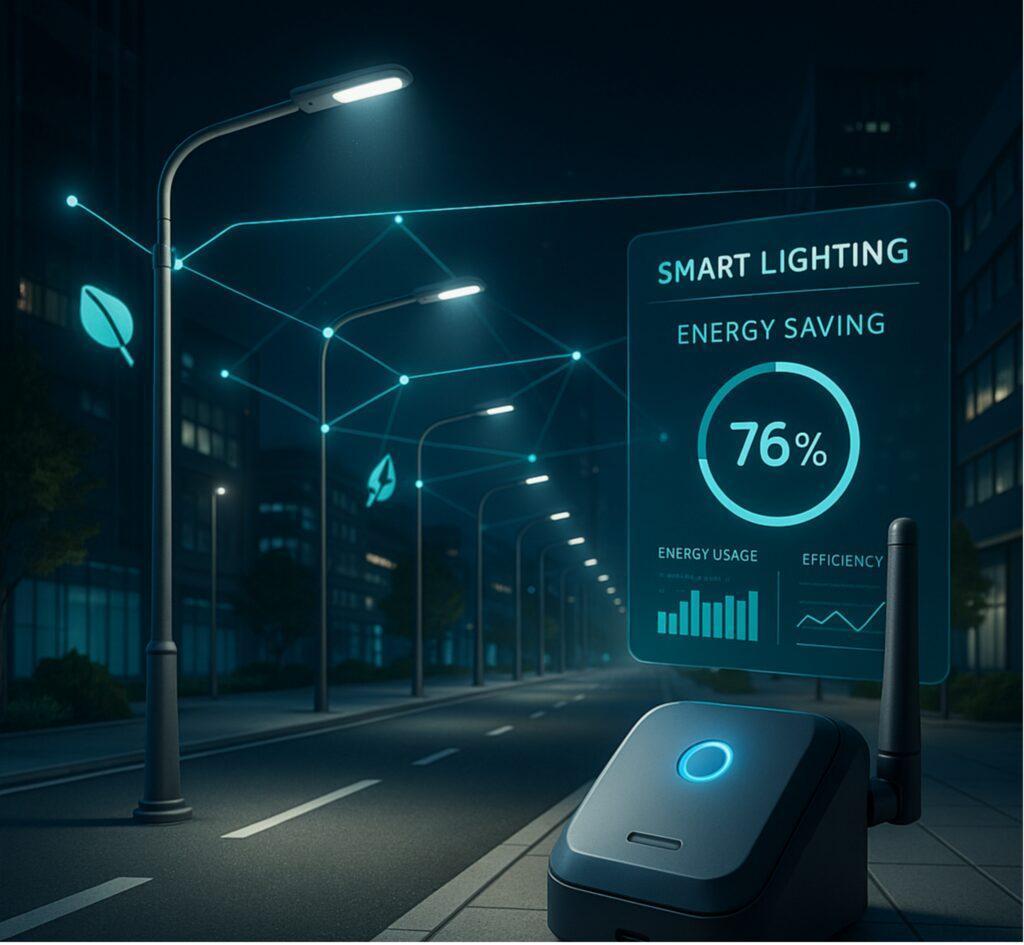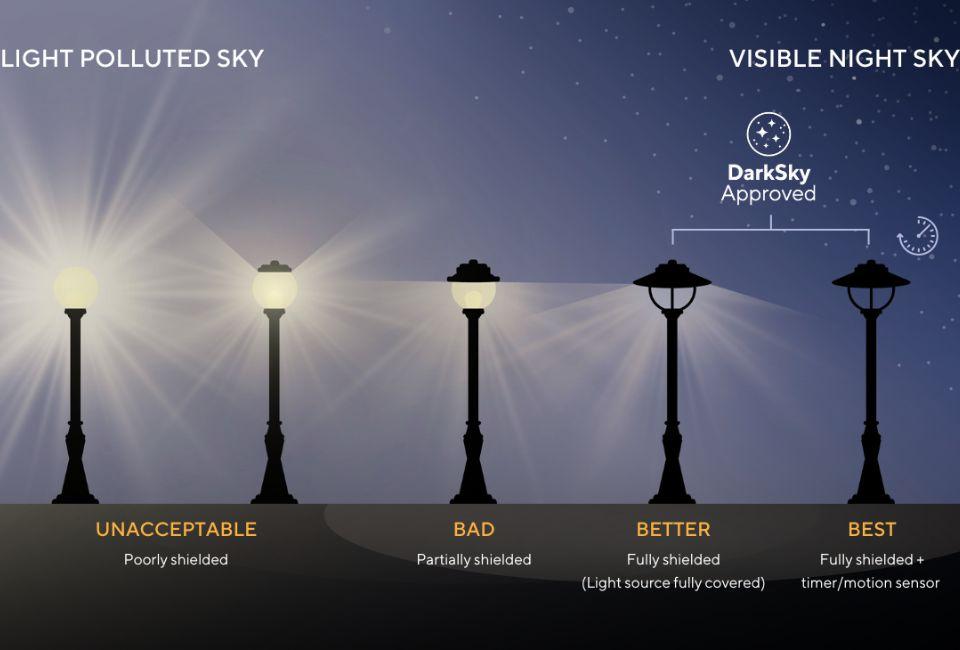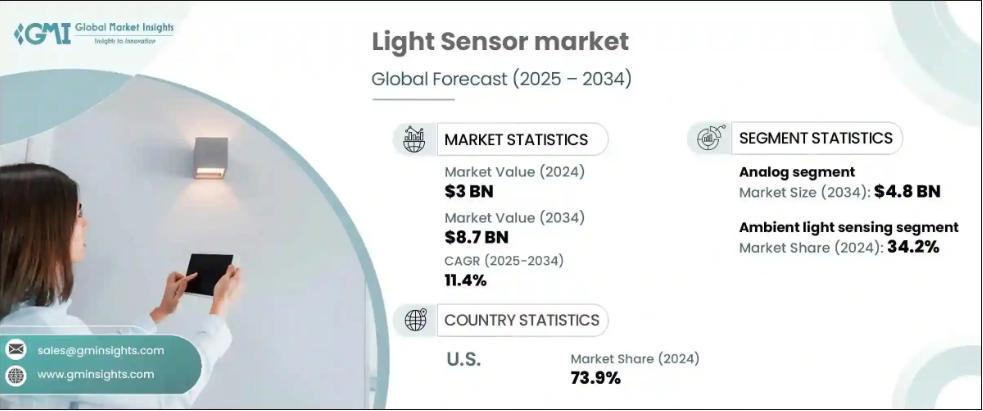Outline
- Introduction
- Why Are Plug-and-Play Photosensor Gaining Popularity Beyond Municipal Lighting?
- What Do Retail-Oriented Customers Really Want from an Outdoor Photocell Light Sensor?
- What Are the Biggest Pain Points for Online Retailers & End-Users?
- How Does LONG-JOIN Address These Pain Points?
- Why Do Amazon Sellers Prefer LONG-JOIN Photo Switch Sensor?
- What Does This Shift Mean for the Future of Outdoor Lighting Controls?
- The Bottom Line

Outdoor lighting is no longer just about big city streets and municipal projects. More homeowners and small businesses are turning to photocell switches. They don’t want to hire an electrician for a porch light. Small businesses need simple solutions for signs and pathways. Online sellers want products that ship fast and look good in retail boxes.
Plug-and-play light sensor photocell switches solve all of these problems. Easy to install, affordable, and stylish, they’re changing how people think about outdoor lighting.
Why Are Plug-and-Play Photosensor Gaining Popularity Beyond Municipal Lighting?
Traditional light sensors were for large infrastructure—city streets, highways. Now, shoppers on Amazon and small businesses want them too. Recent listings show plug-in dusk-to-dawn sensors priced under $15, with simple twist-lock or plug-in designs.
People install dusk-to-dawn photocells on porches and gardens to avoid manual switches. These plug-and-play models are low-cost and easy to find online. They bring municipal lighting tech into everyday use.
Role of E-Commerce Platforms like Amazon
Amazon offers plug-in photocell units with high visibility and ratings. Buyers choose items with UL listing, surge protection—all in product pages. Listings highlight convenience: “just plug into a base,” “weather-proof,” “dusk-to-dawn automation”.
What Do Retail-Oriented Customers Really Want from an Outdoor Photocell Light Sensor?
Ready-Made Solution
Retail-oriented buyers value simplicity and real usability. Many prefer plug-in models for fast, tool-free setups. Amazon listings emphasize “plug-and-play installation” with two-pin connectors—no wiring fuss required. These products remove installation hurdles.
Small-order Availability Matters
Buyers often want one to ten pieces without needing to commit to bulk packs. Listings like the “2 Pack Photo Cell Outdoor Light Sensor” meet this need, offering multipacks for flexible purchasing.
Aesthetics, Price, and Certification Drive Decisions
- Well-designed units look good on porches and gardens. The “Woods 60-Watt Plug-In” is compact and discreet.
- Budget matters. Affordable plug-and-play photocells under $20 create a strong appeal—highlighted in multiple Amazon product titles.
- Certifications matter for trust and compliance. Several units clearly list UL or IP65 ratings in product detail—vital for both safety and listing requirements.
Here is a table further outlining preferred features that retail-oriented customers want in photocells.
| Feature | Common Mention in Listings | Buyer Impact |
| Dusk-to-Dawn Function | 80%+ of Amazon/Home Depot listings | Reduces manual switching effort |
| Weatherproof (IP65+) | Frequently highlighted | Essential for outdoor durability |
| Adjustable Sensitivity | Often added in premium models | Custom control for different regions |
| Energy Saving Label | “Saves up to 85% power,” claims | Strong appeal to cost-conscious homeowners |
Plug-and-play light sensor photocell switches solve all of these problems. Easy to install, affordable, and stylish, they’re changing how people think about outdoor lighting.
Why Are Plug-and-Play Photosensor Gaining Popularity Beyond Municipal Lighting?
Traditional light sensors were for large infrastructure—city streets, highways. Now, shoppers on Amazon and small businesses want them too. Recent listings show plug-in dusk-to-dawn sensors priced under $15, with simple twist-lock or plug-in designs.
People install dusk-to-dawn photocells on porches and gardens to avoid manual switches. These plug-and-play models are low-cost and easy to find online. They bring municipal lighting tech into everyday use.
Role of E-Commerce Platforms like Amazon
Amazon offers plug-in photocell units with high visibility and ratings. Buyers choose items with UL listing, surge protection—all in product pages. Listings highlight convenience: “just plug into a base,” “weather-proof,” “dusk-to-dawn automation”.
What Do Retail-Oriented Customers Really Want from an Outdoor Photocell Light Sensor?
Ready-Made Solution
Retail-oriented buyers value simplicity and real usability. Many prefer plug-in models for fast, tool-free setups. Amazon listings emphasize “plug-and-play installation” with two-pin connectors—no wiring fuss required. These products remove installation hurdles.
Small-order Availability Matters
Buyers often want one to ten pieces without needing to commit to bulk packs. Listings like the “2 Pack Photo Cell Outdoor Light Sensor” meet this need, offering multipacks for flexible purchasing.
Aesthetics, Price, and Certification Drive Decisions
- Well-designed units look good on porches and gardens. The “Woods 60-Watt Plug-In” is compact and discreet.
- Budget matters. Affordable plug-and-play photocells under $20 create a strong appeal—highlighted in multiple Amazon product titles.
- Certifications matter for trust and compliance. Several units clearly list UL or IP65 ratings in product detail—vital for both safety and listing requirements.
Here is a table further outlining preferred features that retail-oriented customers want in photocells.
| Feature | Common Mention in Listings | Buyer Impact |
| Dusk-to-Dawn Function | 80%+ of Amazon/Home Depot listings | Reduces manual switching effort |
| Weatherproof (IP65+) | Frequently highlighted | Essential for outdoor durability |
| Adjustable Sensitivity | Often added in premium models | Custom control for different regions |
| Energy Saving Label | “Saves up to 85% power,” claims | Strong appeal to cost-conscious homeowners |
What Are the Biggest Pain Points for Online Retailers & End-Users?

Retailers and end-users face clear obstacles when it comes to outdoor photocells. Some of these concerns are discussed below.
Pricing Factor
Smart-home businesses cite price pressure as a top challenge. They must balance attracting budget-conscious buyers with maintaining margins. Volume discounts and bundle offers—like multipacks or kits—are common strategies to stay competitive
Unfamiliar Audience
Customer education remains a hurdle, too. Many end users aren’t familiar with technical terms. Retailers must offer clear manuals, intuitive packaging, and how-to videos. Without this, returns and negative feedback can rise.
Order Value
Inventory logistics also pose trouble. Retailers must manage small and mixed-quantity orders efficiently. Keeping stock balanced, especially with multipacks and single units, adds operational complexity.
Here is a table showing some other real-world concerns.
| Focus Area | Real-World Concern |
| Aesthetic Design | Does it fit home decor? Are color and form-factor visually appealing? |
| Plug-and-Play Ease | Is it pre-configured with clear instructions? Any app or remote needed? |
| Small Order Friendly | Can they buy 1–10 pcs? Any multi-pack bundles? |
| Price Sensitivity | Is there a cost-effective version for budget users? |
| Packaging Quality | Retail box? Amazon FBA-compliant? Durable in shipping? |
| Certification Ready | UL / CE / FCC / RoHS marked? Platform-compliant? |
| Marketing Support | Are images, manuals, and videos provided for listing? |
Why Each Factor Matters
- Aesthetic Design: Visual appeal increases click-through and reduces returns.
- Plug-and-Play Ease: An easy setup means happier customers. This decreases support tickets.
- Small Order Friendly: It enables trial purchases and boosts seller flexibility.
- Price Sensitivity: Affordable options open products to wider audiences.
- Packaging Quality: Durable, branded packaging reduces damage and supports FBA requirements.
- Certification Ready: Certifications help listings go live and build trust fast.
- Marketing Support: High-res images and guides boost conversions and reduce buyer hesitation.
How Does LONG-JOIN Address These Pain Points?
LONG-JOIN delivers smart, consumer-ready photoelectric sensor solutions. They blend design, ease, and compliance into one package.
Design-Driven Models
User-friendly and stylish. Their NEMA and Zhaga series units follow ANSI C136.10, C136.41, and Zhaga Book 18 standards for a clean plug-in design. That makes installation fast and visually neat.
Pre-Configured Plug-and-Play Usability
No wiring stress. NEMA twist-lock and Zhaga connectors simply click and twist in. Each model includes delay and surge protection. That avoids flicker, false triggers, and wiring errors during install.
Retail-Ready Packaging & Flexible Order Sizes
LONG-JOIN supports both mass and sample needs. They offer sample and customized services to support small-batch orders. That suits Amazon sellers testing SKUs or homeowners ordering a few units.
Tiered Pricing for Different Budgets
Multiple tiers, one brand. LONG-JOIN offers basic photo controls and models with advanced surge protection and smart functions. That lets sellers cater to cost-sensitive buyers and premium customers alike.
Full Certification for Platform Compliance
Certified on all fronts. LONG-JOIN holds UL, CE, RoHS, FCC, CB listings, and is Alibaba-verified. Zhaga-D4i compliance marks future-proof interoperability. Sellers bypass compliance hurdles instantly.

Robust Marketing Support
They back products with resources. Their site includes quality certificates, product catalogs, FAQs, blogs, and videos. That gives online retailers everything they need for listings and buyer reassurance.
Below is a table outlining some Long-Join products depending on their buyer group.
| Tier | Model | Key Benefit | Target Buyer Group |
| Entry-Level | JL-103B | Low-cost, sleek, plug-in ready | Budget DIY homeowners |
| Mid-Tier | JL-205C | Surge protection, compact design | Small businesses, signage users |
| Premium/Smart Tier | Zhaga-D4i series | Smart-ready, advanced compliance | OEMs, smart lighting retailers |
Why Do Amazon Sellers Prefer LONG-JOIN Photo Switch Sensor?
LONG-JOIN stands out with thoughtful design and seller-first features. Here’s why Amazon retailers favor them:
Attractive, Consumer-Focused Designs
LONG-JOIN light photocell sensors blend form and function. Their sleek, compact models suit porch light aesthetics. They follow NEMA and Zhaga designs, making them visually neat and appealing to homeowners and retail buyers.
No Electrician Needed → Higher Customer Satisfaction
Installation is simple. Plug-in twist-lock or Zhaga connectors mean no wiring, no electrician needed. That ease leads to faster setup and strong customer feedback.
Retail Packaging + Certifications = Faster Listing Approval
- LONG-JOIN units come with IP ratings of 66 or above.
- Their voltage ranges between 120 and 277 VAC.
- Sellers can add their own logo.
- Documentation includes UL/CE/FCC/RoHS certifications.
All these factors faster Amazon approvals and listing confidence.
MOQ-Friendly Supply for Small Businesses and Trial Batches
They support both bulk and sample orders. Sellers can test new SKUs with small batches or scale later. That flexibility suits smaller brands or new Amazon listings.
OEM/ODM Options for Private-Label Growth
LONG-JOIN allows logo customization and offers full OEM/ODM support. Sellers can build private-label lines, enhancing brand identity on Amazon.
What Does This Shift Mean for the Future of Outdoor Lighting Controls?
The market is leaning hard toward user-friendly, shop-ready lighting solutions. Plug-and-play setups are becoming the norm in outdoor controls.
Growing Importance of User-Friendly, Retail-Ready Designs
DIY lighting now makes up 38% of global installations. In 2024, over 54 million consumer kits were sold. This is because consumers demand lighting that they can install themselves. Kits with clear instructions and pre-configured components win.
Expansion into DIY and Small Business Markets
The Garden Lighting market is booming as urban people beautify their spaces with energy-efficient lighting. Homeowners and small retailers now use smart garden controls for safety and ambiance. Online tools plus plant-themed lighting kits have pushed the need for simpler, off-the-shelf products.
Plug-and-Play as a Bridge Between Smart Tech and Traditional Controls
Smart lighting systems rose 20% in adoption, thanks to smart home and automation trends. Traditional manual setups still make up 70% of the market, but demand for automatic controls—with timers, motion sensors, and remote access—is growing at a CAGR of 10.7% into 2030.
Plug-and-play street light controllers are the perfect middle ground. They offer automation without complex setup, making smart lighting accessible to more people. Further, here is a comparison table between traditional and plug-and-play controls.
| Factor | Traditional Controls (Wired) | Plug-and-Play Controls |
| Installation Effort | High, electrician required | Low, DIY-friendly |
| Adoption Rate (2024 est.) | ~70% of outdoor setups | Growing at 10% CAGR |
| Upfront Cost | Higher labor costs | Lower product-only cost |
| Appeal to Consumers | Limited to pro projects | Expanding in retail |
The Bottom Line
Plug-and-play photocells are reshaping outdoor lighting. They make automation simple, affordable, and retail-ready. For reliable supply, Chi-Swear provides LongJoin smart photocells trusted by homeowners and sellers. A dependable partner for growing market demand.
External Links
- https://www.researchgate.net/publication/220895709_The_Connected_Home_From_Market_Barriers_to_Business_Model_Solutions
- https://www.nema.org/
- https://www.zhagastandard.org/index.php?option=com_content&view=article&id=340:zhaga-enables-iot-upgradeable-outdoor-led-lighting-fixtures&catid=22
- https://www.industryresearch.biz/market-reports/residential-landscape-lighting-market-100497






